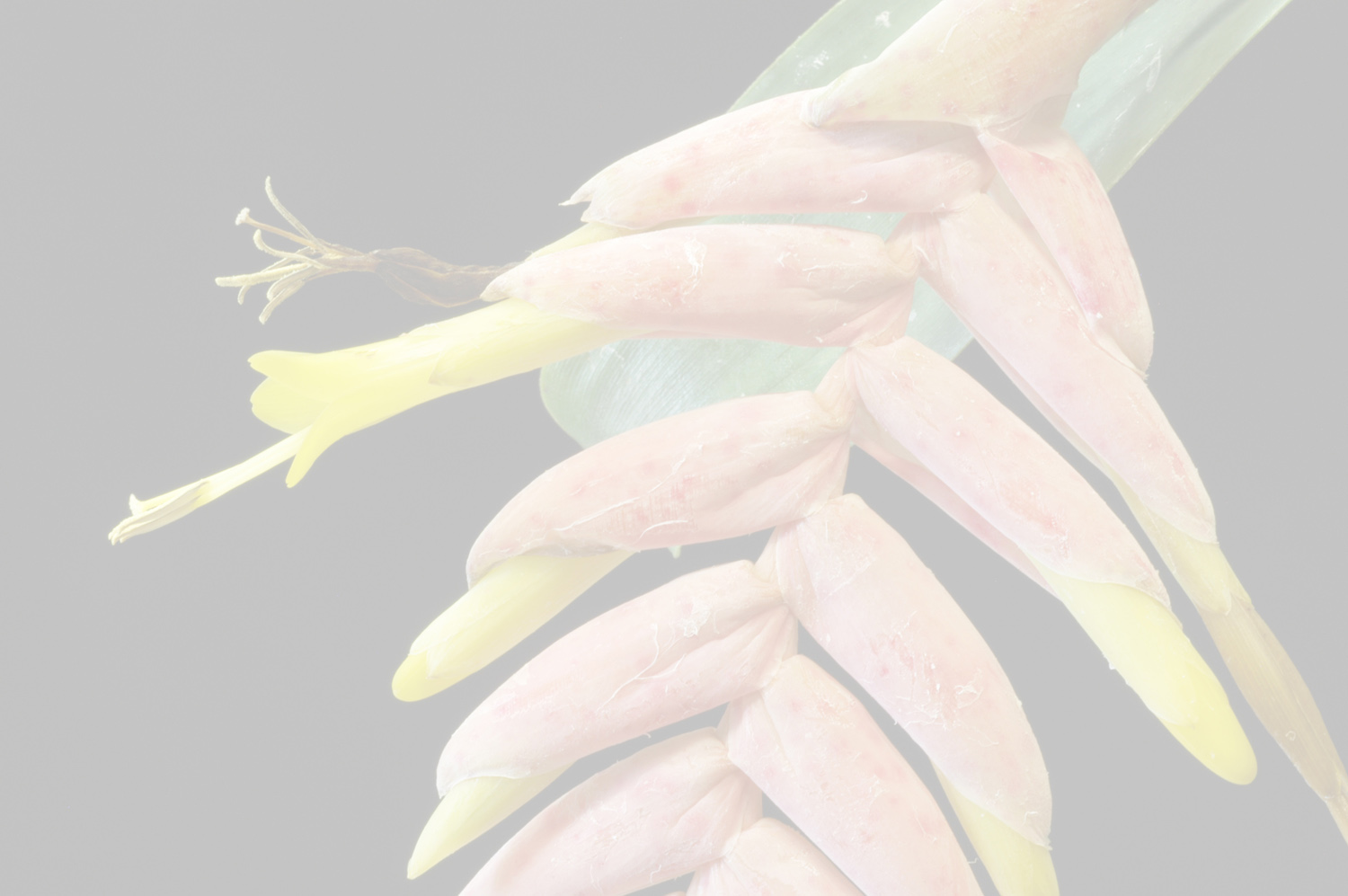Vriesea recurvata Gaudich.
Literature references:
*move your mouse pointer over the page numbers to see comment
Comments:
- Emend Weber &Leme JBS 35(3): 118-122. 1985
The Vriesea recurvata grows in flat or slightly rolling areas, near the Atlantic coast, where the hygrophytic Atlantic forest predominates. The presence of 30meter tall trees in this kind of vegetation is common. Many species of bromeliad also can be found growing on alllevels-frorn the forest ground up to the tops of the trees. V. recurvata is predominantly epiphytic in the lower shrubby stratum, growing on thin branches and lianas, numerous in this part of the forest. Intense shade as well as high humidity are peculiar to this stratum.
The existing population of V. recurvata in the collecting area showed some tenth of the specimens sparsely distributed but presenting a regular pattern in that spot. Amidst other species which occurred simultaneously in the searched region we can point out: Aechmea mollis L. B. Smith, a rare species presenting a bizarre inflorescence, almost "built-in " like a Canistrum or Nidularium, thriving predominantly on the wet and shady ground; Neoregelia longisepala Pereira & Penna (see J. Bromel Soc. 34: 261-263; 1984); Lymania smithii R. W. Read (fig. 9), a brand new bromeliad presenting the same way of growing as V. recurvata and of very common occurrence in the area (J. Bromel. Soc. 34: 201, 212-216; 1984); Billbergia spp. from the taxonomically obscure group of the chlorosticta, much variable in relation to size and coloration of the leaves, which also inhabits the shrub stratum of the forest; the recently described Ronnbergia brasiliensis Pereira & Penna, which is the single representation of the genus in Brazil.
The cultivation of V.recurvata has proved to be easy which means the perpetuation of the species. In nature, however, its future is uncertain. The habitat is being deeply changed with the spread of agriculture. The complete disregard with which the flora and fauna of the region are treated shows how fragile are the conservation means so far adopted, as compared to the economic interests. Fortunately, for the V. recurvata and many other species which share the same habitat, the end has not yet arrived. But unless permanent and effective protective measures can be taken toward the preservation of the typical vegetation of the region, those plants will not last long, and men will again lose part of the irreplaceable beauty of nature as well.
General notes
Several bromeliad species have grown through the years with their provenance surrounded in deep mystery. The reasons are that such plants are rare, and that their collectors-those who have seen them in living form-were unable to or uninterested in keeping them alive, in culture, for later studies, or for the enjoyment of the coming generations. As time went by and economic cycles succeeded each other, the habitat of the plants was taken by man for various activities. Because of this, such species have been eliminated together with the forest vegetation, and are now confined to small, isolated areas. This elimination process is responsible for the great difficulty in searching nowadays for new populations of these species in nature. Usually, the information furnished by the type plant collector provides the only references, sometimes unreliable or excessively vague. In some cases, even with a considerable amount of luck, a century passes before the species can be rediscovered. Vriesea recurvata, a Brazilian species described by Charles Gaudichaud-Beaupre in 1843, is an example. The only known examples of this plant were the holotype of Gaudichaud, showing the species occurrence (probably incorrect) in the State of Rio de Janeiro, and the specimens collected by Jacques Samuel Blanchet in the State of Bahia.
Luckily, during a collecting trip in the County of Una, State of Bahia, we found a numerous population of Vriesea recurvata. Even in the absence of freshly flowering material, we could identify the species on the basis of dry inflorescences which presented unmistakable floral characteristics: strongly recurved floral bracts with wavy edges. Later on, having adapted to our greenhouse in the city of Rio de Janeiro, some specimens of it finally flowered, allowing the confirmation of our previous identification. It seems appropriate, on the basis of this evidence, to emend the original description of the plant in order to improve its full characterization. —See Leme & Weber 1985

